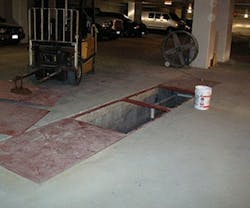Built in 2005, the Center for Health and Healing was designed with water conservation in mind. In addition to a 50% reduction in potable water needs, Oregon Health & Science University stipulated that the Portland-based project had to treat 100% of its sewage as well.
To achieve these goals, Interface Engineering installed a membrane bioreactor that can process up to 35,000 gallons of water per day, or an average of 1,600 daily users. The system is located on the third floor of an underground parking garage.
Treated water is combined with rainwater and reused for toilet flushing, cooling tower makeup in the central utility plant, and irrigation. While the 400,000-square-foot facility includes a mix of tenants, reclaimed water is only used in core office areas to avoid complications with medical and lab processes.
The waste treatment plant processes an average of 23,000 gallons daily or roughly 161,000 gallons each week, according to a 2011 post-occupancy report. The system is so efficient that only 1,500 gallons of sludge need to be disposed of on a weekly basis – less than 1% of the total collected blackwater.
The MBR joins a host of other efficiency strategies, such as low-flow fixtures, rainwater harvesting, a green roof, groundwater infiltration, and a bioswale. This is notable because the building’s aggressive focus on water conservation was an instrumental part of earning double Platinum for LEED NC in 2007 and LEED EBOM in 2011, notes Jim Gleason, a partner of Treatment Equipment Company, which supplied the bioreactor.
The center’s water features qualified for credits under alternative sewage treatment, water efficiency exceeding a 30% reduction, and innovation for water use reduction beyond 50%.
The building is currently experiencing a 49% reduction in potable water use over a building of a similar design, or roughly 5.5 million gallons a year (MGY). Given all of the water efficiency strategies, the site actually reclaims water far beyond its reuse needs and sends an estimated 50 MGY of groundwater and reclaimed wastewater into the local waterways.
While the center cost over $100 million, the membrane bioreactor only added $950,000. A $50,000 tax incentive was also secured for the system.
As of 2011, the building uses 5.7 MGY for potable water and 5.5 MGY for non-potable purposes, paying $15,000 for drinkable water annually and over $11,600 in sewer costs. With an annual cost savings of $27,000, the system has an estimated payback of less than 10 years.
About the Author
Jennie Morton
A former BUILDINGS editor, Jennie Morton is a freelance writer specializing in commercial architecture, IoT and proptech.
